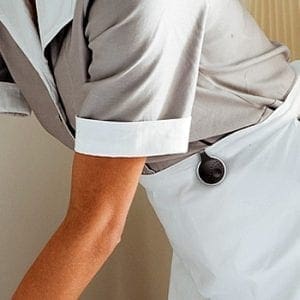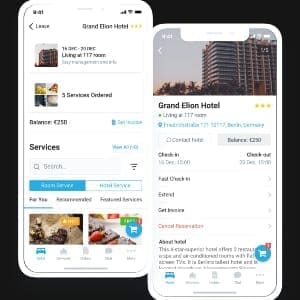
With legislation over electronic safety devices (ESDs) rolling out throughout the Western World, it is critical that we discuss some hidden consequences that may result from a failure to act because this movement has caused a fundamental shift in the legal landscape regardless of whether there are actual regulations in place for your municipality or not.
As a keen follower of hospitality trends, I have witnessed many cities and states enact new laws mandating the deployment of wearable safety devices. Even though the Canadian property for which I am currently the asset manager was unaffected by these regulations, I still sought out a vendor in order to be proactive because it’s only a time of matter before a ruling came out in this hotel’s municipality.
While investigating solutions, I received some pushback from ownership as they did not fully grasp the immediacy of the situation from a strictly numerical, cost-benefit point of view. Most territorial warnings stemming from a failure to abide by the new legislations come with a wide grace period by which to bring a property up to speed. And then the fines for these new laws aren’t especially punitive in their dollar figures either.
However, once our lawyer chimed in with a potentially catastrophic risk management scenario, this was the linchpin that instantly closed the matter in favor of adoption.
The sequence of events he illustrated was one where first an employee is assaulted while on the clock then, with management having been previously aware of the mandate for panic buttons, the property is found negligent, and all before the media gets a hold of the story and permanently smears the brand’s name across the internet.
This was the most important aspect to understand: It is because of the general industry acquaintance with these new regulations that has come about in the past couple of years, as well as the current prevalence of wearable safety device vendors, that it therefore is reasonably foreseeable in the eyes of the law that a hotel should now be fully capable of providing some form of safety or security measure to mitigate harm to its employees.
It can happen to you
My rationale for the dire warnings arise from several conversations I’ve had recently with senior executives who have held similar beliefs as the aforementioned ownership once did. They feel that they can shrug a ruinous scenario like this off as if it’s something that will never happen at their hotels. But the truth is that the stats are in favor of ‘when’ not ‘if’.
That is, with certain statistics pointing to as high as 90% of female and 70% of male hotel employees reporting being sexually harassed while on the job (source: Imbibe Magazine), the expected probable outcome is that most properties are likely to have an incident of this nature at some point in the near or distant future. The difference nowadays is that since the start of the #MeToo movement, housekeepers or other team members operating in vulnerable positions are more willing to speak openly about workplace misconduct while at the same time reporters are chomping at the bit for more clickbait stories about ‘evil corporate cover ups’ or ‘big business negligence’.
Speaking with Parminder Batra, Co-Chair of the HTNG Staff Alert Technology Workgroup and CEO of TraknProtect, she elaborated on the issue, “Working as a housekeeper can at times be quite discomforting because, whereas managers have their own desks, these team members, more often women, don’t know what’s on the other side of the guestroom door. They are constantly entering uncertain situations where there is a distinct possibility of encountering some form of aggressive activity or sexual perversion. Safety buttons empower these housekeepers by allowing them to summon help silently and know that someone will come check on them. Ultimately, this is great for hotels because these employees are more likely to engage with guests than shy away from them.”
Reputation management
All matters of the court aside, the true risk is not the cost of the panic buttons, the fines from noncompliance or the damages you may incur from settling a case; it’s your reputation. And all it takes is one bad story in the news, which can have huge monetary ramifications that last over a decade.
To put it in relative terms, all senior managers shiver at the thought of a one-star review on TripAdvisor. Heck, I’ve sat in on emergency meetings to triage these exact situations, all the while knowing that eventually this singular bad critique will be washed away by the flood of forthcoming good reviews. The news cycle doesn’t work that way; once it breaks that your hotel was negligent in protecting your employees from harm, the damage can be irreversible. Guests won’t want to stay with you, and it will be harder to attract new candidates due to your freshly accrued odious stigma.
In running a property, this might be my worst nightmare. In today’s ‘if it bleeds it leads’ approach to journalism, you would be crazy to think that the press wouldn’t pounce at the chance to throw your hotel under the bus, regardless of any later retractions they issue or libel suits you counter with.
Thinking about it positively
Besides the doom and gloom of potentially losing millions in revenue over the long-term, implementing these wearable safety devices has had some surprising benefits that are worth sharing firsthand.
Specifically, room attendants love them for precisely the reason that they have been mandated – the buttons make them feel secure and recognized as individuals. This subtle sense of team empowerment has had a noticeable positive effect on morale and employee retention, thereby indirectly helping resolve the property’s staffing problems.
Given the potential risk as well as the positive benefits, I feel as though I would be shortchanging you by concluding without first giving you, the reader, a call to action for next steps you can take. As such, here are four potential vendors for your consideration:
- TraknProtect (traknprotect.com) – A robust system that gives exact room location, is easy to deploy and provides effective team safety as well as providing IoT solutions for inventory, room tray and vendor tracking.
- AiRISTA Flow (airistaflow.com) – Even though most best-in-class solutions are proceeding in the BLE direction, this company provides RFID-over-WiFi real-time location systems that connect to software that also optimizes business performance.
- ROAR For Good (roarforgood.com) – Makers of a wearable hotel employee security platform combining alert devices with their trademarked AlwaysOn application that is designed to work in situations without cellular or WiFi access.
- DirectAlert® (directalert.ca) – Working more in the residential safety space, they offer necklaces and bracelets for two-way home communication and fall detection as well as a mobile GPS device with built-in geofencing.


















